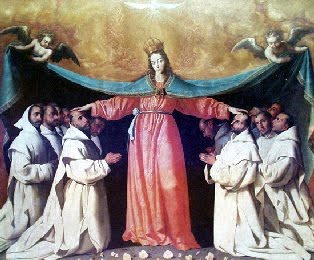 Her name is Julia Crotta (1907-1990). She was very devout when it came to her Catholic faith. She studied dance in New York seven days a week but never once missed Sunday Mass. After returning home in 1926 she went to the Hartford Conservatory for violin, piano and musical theory. In 1932 she received a diploma from the Yale School of Music and planned on another two years there. In September of that year, as she was walking to the campus music building she heard a voice telling her to quit Yale and join Albertus Magnus Women's College, a Catholic school well-known for its liberal arts course. Remarkably obedient, she asked for a transcript of her grades because she was leaving Yale.
Her name is Julia Crotta (1907-1990). She was very devout when it came to her Catholic faith. She studied dance in New York seven days a week but never once missed Sunday Mass. After returning home in 1926 she went to the Hartford Conservatory for violin, piano and musical theory. In 1932 she received a diploma from the Yale School of Music and planned on another two years there. In September of that year, as she was walking to the campus music building she heard a voice telling her to quit Yale and join Albertus Magnus Women's College, a Catholic school well-known for its liberal arts course. Remarkably obedient, she asked for a transcript of her grades because she was leaving Yale. In March of 1934 at the registrar's office, one of the Sisters asked Julia to join them for a Holy Week Retreat. After a couple of refusals, Julia finally agreed. During the Retreat she found that she was attracted to the bare altar. While alone in the convent chapel, she heard a voice calling out her name. She looked but no one else was in the chapel; and then she heard her name called out again. Then she saw a man weeping and stretching out his wounded hands calling her to the desert promising her his abiding presence. Her response was "yes" but it was unspoken. After that, the vision of the man was gone, the chapel was once again silent and Julia was crying tears of joy. Soon after, the Sisters were in choir as Julia listened to the Psalms and the Lamentations of Jeremiah. She would later say that this vision transformed her entire existence.
At the advice of a priest she headed to Rome. She experienced many sufferings along the way to find where she belonged -- her place in the desert. Julia would receive a papal rescript giving her permission to enter the Camaldolese monastery of Sant'Antonio but not as a novice, instead as a recluse, a lay anchoress and was given a room that was isolated from the rest of the religious community. She was granted permission to enter this Camaldolese Benedictine monastery to live out a secluded and eremitical life.
Her days at the monastery were divided between prayer and work and necessary materials were left at the door of her cell. Her meals were strictly vegetarian which were also delivered to the door of her cell. Her bed was simply boards and needed blankets and her cell was furnished only with a table and a bench. On her wall was a Cross and an image of the Immaculate Virgin. This very ascetic life was given approval by Pope Pius XII. In this vocation she was no longer Julia but Sister Nazarena. She lived as an anchoress for 45 years until her death.
Her detailed story is in a book titled: "Nazarena, an American Anchoress" written by Thomas Matus, a Camaldolese Benedictine monk. The book is published by Paulist Press.
I've read it and loved it!











